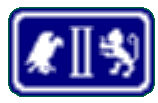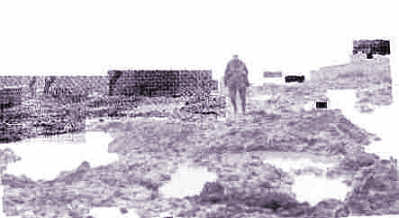The Story of the American Expeditionary Forces |

|
II CORPS SUPPORTOF THEFLANDERS SECTOR |

The Famous Flanders Mud

|
Despite General Pershing's goal of consolidating all U.S. forces under his command, a number of divisions fought for extended times. Two divisions, the 27th and 30th, spent their entire tour in training and in deployment under British Command. They were designated the II Corps of the AEF and placed under the immediate command of American Major General George W. Read  Panoramic View of Ypres Salient from Mont KemmelLocate Ypres on a Map of the Western Front.On the 30th it was discovered that the Germans were retiring from the Lys salient and the British reoccupied Mont Kemmel. The 27th Division wa directed to move forward the next day in cooperation with a like movement by the British units on its right, while the 30th Division was to advance the southern portion of its front to capture Voormezeele, and keep abreast of the left of the 27th. Both divisions pushed forward to their objectives before daylight of the following day, and the 27th continued to make small gains unit September 2, during which time it had captured Vierstraat Ridge and pressed the Germans back about a mile.  Memorial to American Service South of Ypres
The 27th Division was relieved on the night of September 2-3 and the 30th on the night of September 3-4. Both divisions entered the line again about three weeks later north of St. Quentin.
|
|
Sources and thanks: Compiled by the Editor from American Armies and Battlefields in Europe. Regular contributor Ray Mentzer provided the Photos. MH |
To find other Doughboy Features visit our |
Membership Information  Click on Icon |
For further information on the events of 1914-1918
visit the homepage of |
Michael E. Hanlon (medwardh@hotmail.com) regarding content,
or toMike Iavarone (mikei01@execpc.com) regarding form and function.
Original artwork & copy; © 1998-2000, The Great War Society